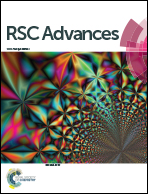Identification of potential quinoxalinone-based aldose reductase inhibitors by 3D-QSAR, molecular docking and molecular dynamics
Abstract
The aldose reductase ALR2 (EC1.1.1.21) has been confirmed to be a target for the treatment of chronic diabetic complications, and ALR2 inhibitors (commonly known as ARIs) are the most effective drugs for this condition. In this work, new potential ARIs were designed using a combination of molecular modeling techniques. First, three-dimensional quantitative structure–activity relationship (3D-QSAR) models were built by applying comparative molecular field analysis (CoMFA), comparative molecular similarity indices analysis (CoMSIA), and topomer CoMFA. The best CoMFA model yielded a q2 = 0.894 and r2 = 0.994, the best CoMSIA model yielded a q2 = 0.907 and r2 = 0.995, and the topomer CoMFA analysis yielded a q2 = 0.752 and r2 = 0.985, which all exhibited satisfactory correlations and predictive abilities. The results also indicated the steric, electrostatic, H-donor and hydrophobic fields to play key roles in the models. Molecular docking was then performed to explore the conformations of the inhibitors and the key amino acid residues at the docking pocket, and the binding between the inhibitors and the receptor protein. Molecular dynamics (MD) simulations further validated the reliability of the docking results. By analyzing the above results, six new potential inhibitor compounds were identified and predicted to have good biological activity. The information acquired in this study should provide valuable guidance for the development of potent and effective ALR2 inhibitors.


 Please wait while we load your content...
Please wait while we load your content...